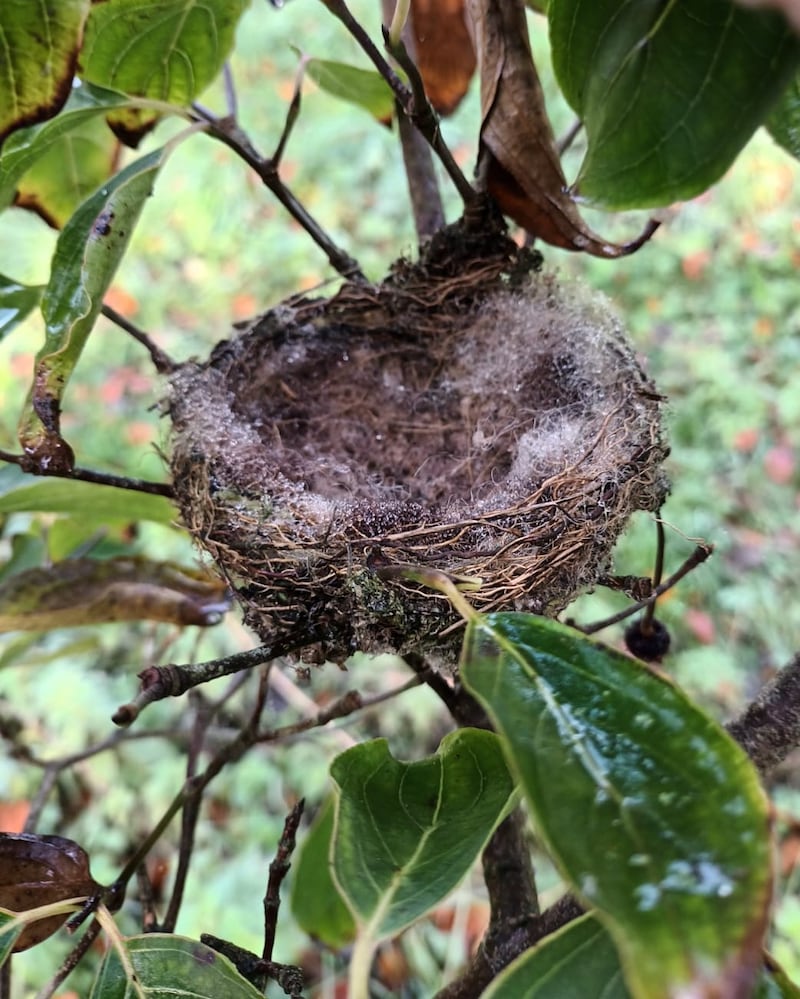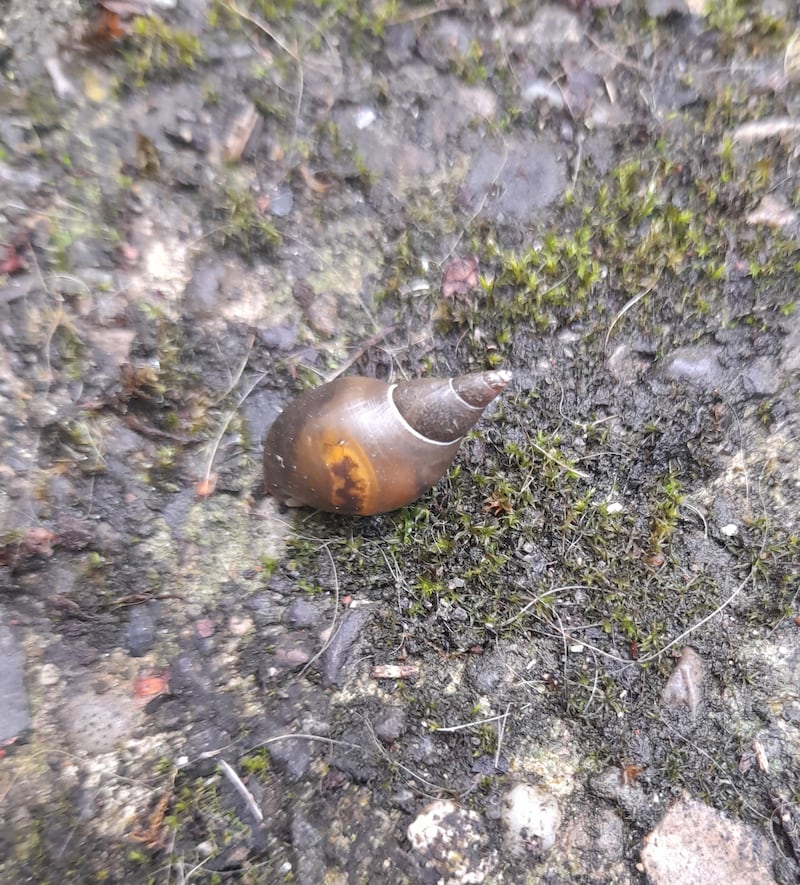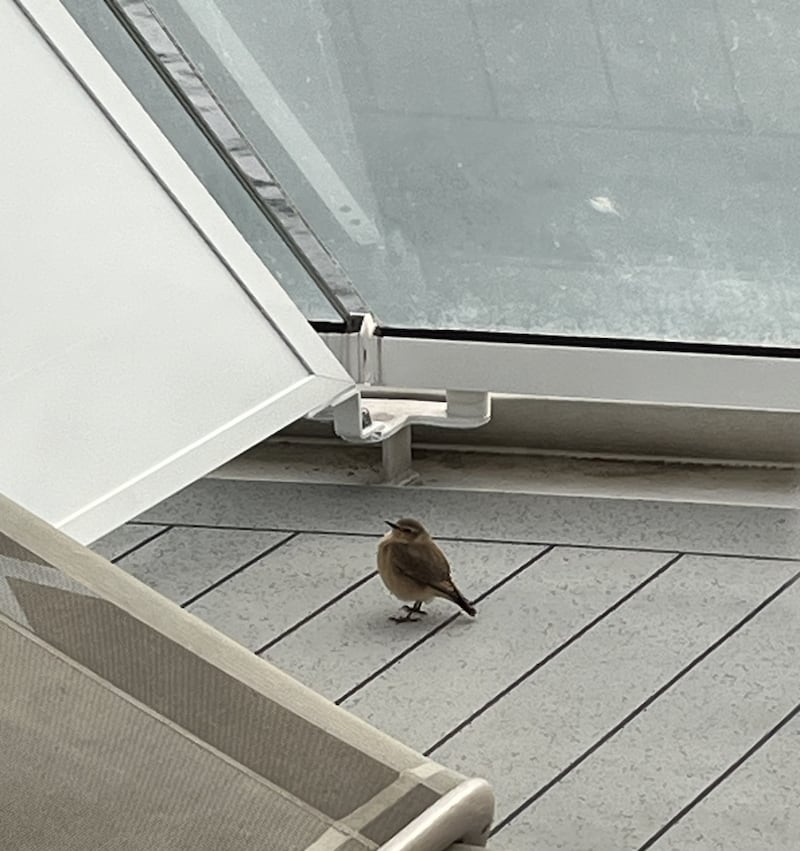Here is a picture of three sunbathing foxes on my shed roof in Drimnagh. Rachel Varah, Dublin
These are probably three sibling cubs for whom your garden and shed roof are part of their territory. Foxes live in family groups that consist of an adult male, a breeding vixen, and maybe one or two adult non-breeding females who are related to the resident female and who stay to help rear the cubs. Dublin has a very high density of breeding foxes. These cubs will have been sent on their way by now and resident dominant pair will soon be vociferously courting and mating again.

We are a bit stumped by this nest, which we recently discovered in a very young cornus bush in our garden. It was quite exposed and low to the ground at 1.4m. It was 8.5cm diameter and 4.5cm in depth, and made of sheep’s wool and very fine fibres that look like roots. It is not lined as the whole thing is made of the same soft material. Olivia Goodwillie, Kilkenny
According to Niall Hatch of Birdwatch Ireland, the overall construction of the nest and, especially, the fact that it has been lined with wool indicates that it belongs to a pair of finches, most likely chaffinches. These are one of the most abundant and widespread breeding bird species in Ireland. They rear one brood of four or five chicks per year; the nesting season is from mid-April to the end of May.

What type is snail is this? Roisin McLaughlin
This is most likely Lymnea stagnalis, the great pond snail. You do not give any dimensions and it has its back – as it were – to the camera so that I can’t see the opening. But these snails are dextral, which means they are coiled clockwise, and the top of their spire is darker in colour. They live in freshwater ponds and feed on plant material there.

My wife and I were on a cruise. On September 30th we were entering the English Channel close to Brest, where we noticed this little bird, which had hitched a ride on our balcony. Any idea what type of bird it was? It was approximately the size of a robin. Eoin O’Flynn
This is a juvenile wheatear, a common summer visitor to Ireland from Africa. Wheatears are ground nesting and breed here mainly on rough pasture lands grazed by sheep, sometimes building their nests in convenient rabbit burrows. The young are not as brightly coloured as their parents, but they share the large white patch on the rump and tail that gives the species its name (“wheatear”, of course, is from the old English for “white-arse”). These small songbirds are long-distance migrants, and this youngster would just have set off on its first ever journey to sub-Saharan Africa. Were you coming or going on your cruise when the bird landed?

It was fantastic to see these Irish single scull Olympic hopefuls in an early-morning training session on the Dodder (no doubt dreaming of LA), with some highly impressive junior rowers. Chris Fitzpatrick, Dublin
Well, it is one way to describe the movement of these pond-skating water insects. They actually have six legs, as all insects do, but the first small pair are held out in front along with the antennae and are used to catch small insect prey trapped on the water surface. They use the middle pair for “rowing” and can move them exceedingly fast, as the video from which this still was taken, shows. Slow-moving clean water is where they live.
Please submit your nature query, observation, or photo, with a location, via irishtimes.com/eyeonnature or by email to weekend@irishtimes.com














